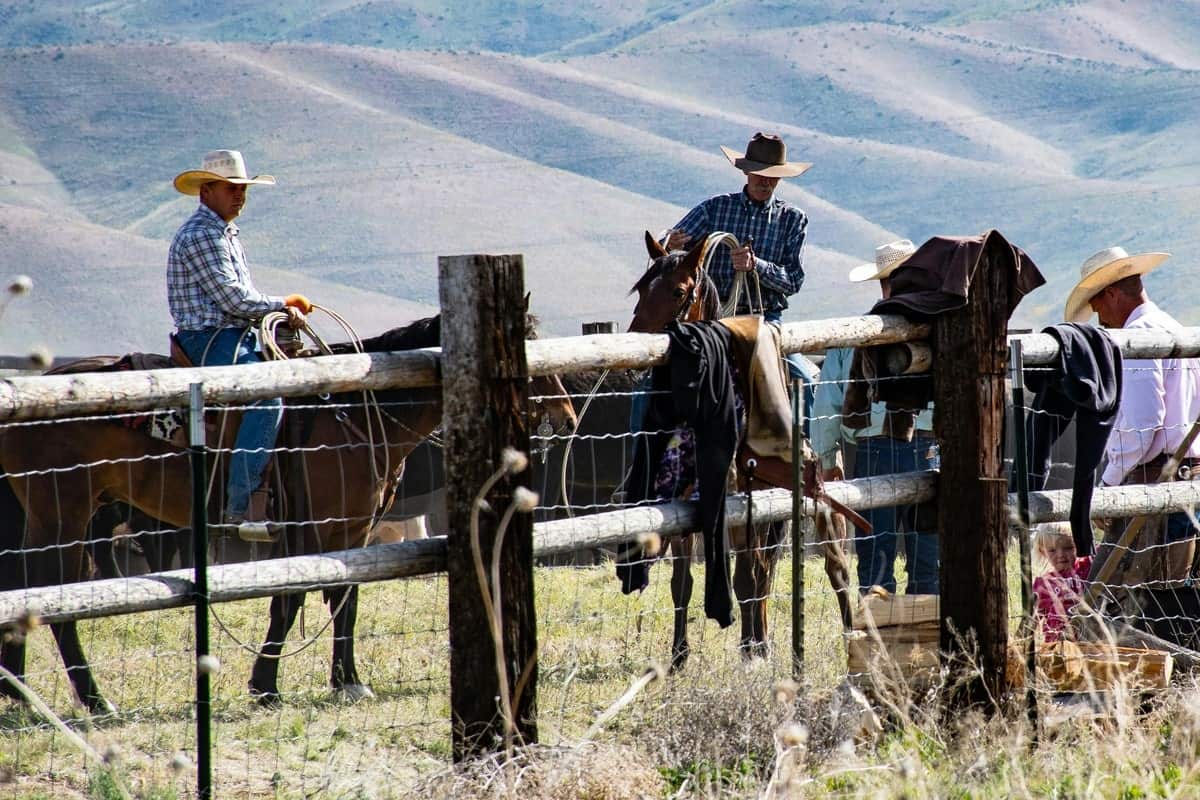Saddle up, fellow equestrian enthusiasts! The options in the wide world of horseback riding are as varied as the magnificent animals we mount. This tour through the fascinating world of the types of horse riding styles is designed specifically for you, regardless of your level of experience. So grab hold of those reins and be ready to experience the world of horses like never before.
Riding horses is more than just a pastime; it’s a cultural, historical, and purely thrilling fabric. We’ll discover the subtleties of several riding methods as we set out on this expedition, each with its own special appeal and difficulties. We will cover show jumping, dressage, and even therapeutic riding, ranging from the wild spirit of Western disciplines to the subtle grace of English riding.
Prepare to sprint through the pages of this site, where we will not only honor the variety of equestrian activities but also offer advice to inquisitive hoof thinking about taking a lesson. So grab a saddle, fasten your seatbelt, and let’s explore the fascinating world of equestrian styles together!
Types of horse riding
There are different styles of riding a horse but there are two most common horse-riding styles which are followed around the world:
- English riding style
- Western riding style
Some horse riders also consider another horse-riding style common. The other riding style which is common around the world is:
- Group riding style
Among all these riding styles, English riding style is the most common. It has been promoted throughout the world. Olympics include three different riding disciplines, all of which belong to English style of horse riding.
All these riding styles have different types of events which may differ from each other. In this article, we are only going to discuss the events included in the English style of horse riding.
The Classic Elegance: English Riding
Welcome to the world of English horseback riding, where grace, tradition, and a close bond between the rider and the horse are paramount. English riding is a discipline that has its roots in centuries of European horsemanship and is distinguished by elegance, grace, and a timeless sense of style.
A. Origins and History
The origins of English riding can be found in European military cavalry training. With an emphasis on delicacy and subtlety, the discipline developed as a means of improving communication between horse and rider. It evolved into a well-liked pastime and sport over time, showcasing a special fusion of technique and discipline.
B. Key Techniques and Riding Gear
A key component of English riding is the rider’s stance and the nuanced messages they provide with their actions. Maintaining a close contact with the horse, riders assume an upright position with a deep seat. It is essential to employ stirrups, a saddle, and reins to facilitate efficient control and communication.
This style is typified by the English saddle, which has a simple form that allows the rider to feel the horse’s movements up close. Compared to other disciplines, stirrups are shorter, which promotes a deep seat and guarantees a solid bond between the rider and the horse.
C. Popular Disciplines within English Riding
Different disciplines within the English riding community accommodate varying tastes and abilities. Dressage, sometimes called “horse ballet,” emphasizes accuracy and well-executed moves. An element of excitement is added by show jumping, which tests the ability of riders and horses to maneuver through a course of obstacles quickly and skilfully. In contrast, eventing tests the adaptability of the horse and rider by combining dressage, cross-country, and show jumping.
English riding is more than just a sport; it’s a constant dialogue between two creatures in which the rider gives commands and the horse responds elegantly. As we proceed with our examination of various horseback riding techniques, allow the sophisticated grace of English riding to linger in your thoughts, encouraging you to contemplate the beauty of this age-old art. Stay tuned as we journey into the wild expanse of Western riding in the next segment of our equestrian adventure.
The Wild West Adventure: Western Riding
Yeehaw, cowboys and cowgirls! Hold onto your hats as we mosey on down to the heart of the equestrian frontier—the exhilarating world of Western horse riding. With roots deeply embedded in the spirit of the Wild West, this style of riding is a symphony of grit, freedom, and a touch of cowboy charisma.
A. Origins and Cultural Influence
The American West’s ranches and wide-open spaces gave rise to western riding, as cowboys and cowgirls devoted their lives to tending to the herds of cattle. The discipline quickly became an art form due to its effectiveness and practicality on the ranch. Western riding is now a celebration of the diverse cultural fabric of the American frontier, not merely a fashion statement.
B. Distinctive Features and Riding Equipment
Western riding is distinct due to its easygoing and carefree attitude. Seated deeply in the saddle, riders frequently assume a more relaxed, “cowboy cool” stance. The deep seat and high pommel of the Western saddle offer stability and comfort for extended rides with livestock. Extended stirrups facilitate increased range of motion and a more comfortable leg position.
More than merely trendy items, the classic cowboy hat and boots represent the bond between the Western rider and the harsh terrain. The addition of leather chaps, which offer protection from brush and thorns, gives the outfit a utilitarian yet fashionable touch.
C. Exploring Different Western Riding Subtypes
There are many kinds in the vast realm of Western riding, each suited to particular needs and tastes. Each discipline demonstrates the adaptability of both horse and rider, from the exhilarating thrills of barrel racing to the deft reining and cutting techniques.
Western riding is a lifestyle, a means of establishing a connection with the land, the horse, and the spirit of the cowboy. It’s not only about skill. So, dust off your boots and join us as we continue our journey through the varied landscapes of horse riding styles. Next up, we’ll leap into the world of show jumping and cross-country riding, where challenges and excitement await!
Unity in Motion: Group Horse Riding
There’s a unique magic that unfolds when hooves synchronize, and riders move in harmony. Horseback riding in groups, also referred to as herd riding or trail riding in a group, enhances the equestrian experience by fostering community. This section will discuss the pleasures and complexities of group riding, when the relationship between horse and rider becomes more than just a horse-rider relationship—it becomes a community of like-minded enthusiasts.
A. The Joy of Shared Journeys
Riding horses in a group is not simply a fun sport to do together; it’s a chance to connect and make lifelong memories. Imagine a line of riders passing through peaceful fields or paths, each with their own horse. Exploration becomes considerably more enjoyable when shared, turning it into a social as well as an equestrian activity.
B. Coordination and Communication
Riding in a group, riders and their horses join together in a coordinated dance. For the trip to be smooth and comfortable, coordination is essential. Through a nuanced language of gestures and calls, riders communicate not only with their horses but also with each other, indicating turns, halt, or changes in pace.
C. Tailored Experiences for All Levels
Riding horses in a group is an inclusive and accessible activity that can accommodate riders of all ability levels. While seasoned riders enjoy the companionship of like-minded enthusiasts, novice riders benefit from the support and direction of more experienced peers. As a result of the shared experience, horseback riding becomes more than just a sport—it becomes a social event.
D. Safety and Etiquette
While the allure of group riding is undeniable, safety remains paramount. Riders must adhere to established etiquette, maintaining a safe distance and respecting the pace and preferences of the group. Clear communication ensures everyone enjoys the ride while minimizing risks.
E. Exploring Group Riding Adventures
Joining a group ride on horses can lead to a variety of experiences, such as charitable rides or themed events, or just relaxing trail rides through gorgeous scenery. Every outing becomes an unforgettable adventure because of the group’s contagious excitement.
The allure of group horseback riding is in the common love of these amazing creatures and the great outdoors, whether you’re a lone rider looking for a sense of belonging or a member of a close-knit equestrian group. We’ll explore the dexterity and talent of dressage riding in our upcoming segment. In dressage, the horse and rider communicate through a beautiful waltz of movements. Now hop in your saddle and let’s resume our riding adventure!
Conclusion
As we come to the end of our investigation into the many riding styles, we have discovered a range of experiences, each distinct but all together capturing the spirit of riding. This voyage goes beyond simple sport, from the beauty of English riding to the wild energy of the West and the companionship in group rides.
As riders, may you enjoy the journey of continuous discovery, whether honing your craft, going it alone, or connecting with like-minded others. Cheers to rhythmic hooves, the wind in your hair, and the laughter of like-minded people. Happy trails and may your equestrian pursuits be as limitless as the spirit of the horse itself till our next ride. Go ahead!



